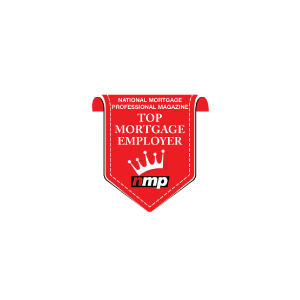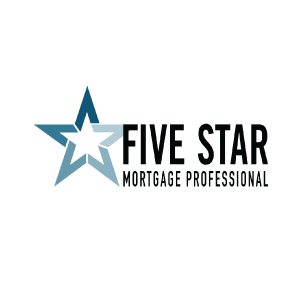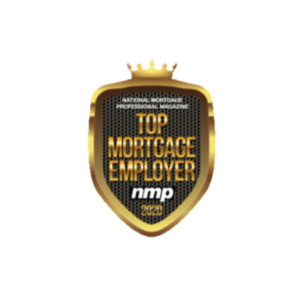Line of Credit Loans:
What Decision is Best for your Finances?
- October 20, 2022
When it comes to personal financial decisions, the solution is never one-size-fits-all. For example, there are multiple types of loans that a borrower could use for many different reasons. There are student loans, automobile loans, debt consolidation loans, and of course, mortgage loans.
When it comes to home loan options, there are also multiple potential avenues for a homebuyer or homeowner to explore, including conforming loans, non-conventional loans, and even a line of credit loan.
At the end of the day, there is no magic wand to wave that will automatically pick which loan is best for your unique circumstance, but through thorough research, you can gain a better understanding of what each loan looks like and how it works.
Personal Loans vs.
Line of Credit
To understand what each loan looks like, it is important to know the similarities, differences, pros, and cons of each different type. Personal loans and lines of credit are both unsecured loans and rely solely on your creditworthiness. But because these loans rely so heavily on credit scores, they may be more inaccessible for borrowers with lower credit scores.
Personal Loans: What Are They?
There is a multitude of types of personal loans, and they can be used for a variety of reasons. Whether you want to focus on home improvements, consolidate high-interest credit cards, or even take out a loan for a large expense like a wedding or an unexpected expense, personal loans are available. Typically they are available in $1,000 to $100,000 lump sums, but your lender will first examine your creditworthiness before giving you the loan.
Personal loans are paid out in lump sums, meaning that you will receive the entirety of your funding at once which will then be repaid through monthly payments with term limits ranging from two to seven years on average. Personal loans are best used for any financial instances in which you know the budget for certain in advance.
Additionally, personal loans have a few key features that make them different from a line of credit including:
- They are installment loans rather than a revolving line of credit
- They have a fixed interest rate
- May include a variety of fees including origination fees, application fees, late fees, or prepayment fees
- The minimum credit score for approval is typically 580
- Include loan term limits ranging from two to seven years
- Include minimum monthly payments
- Paid in a lump sum amount
If you’re interested, you can check your eligibility and potential rates for personal loans online as well with helpful calculators like this.
Taking Out a Line of Credit: How Does it Work?
When working with a line of credit, this loan functions much more like a credit card than a personal loan, but it is still dependent on your credit history. While a line of credit still allows you access to a certain amount of money, it is not paid out in a lump sum.
Instead, with a line of credit, your lender will give you a set amount, often up to $100,000 with some lenders offering lines of credit up to $500,000. You can pull from the amount on an as-needed basis, and you will only owe interest on the amount of money you have borrowed. Additionally, lines of credit are paid off much like a personal loan with monthly payments.
A line of credit is typically used for expenses that do not have a set budget, or even for an emergency fund just in case. They can also be used for debt consolidation, and are considered a revolving line of credit. They are considered a revolving line of credit because unlike a typical loan where the money is borrowed, paid off, and the account is closed – personal lines of credit stay open for as long as they are needed by the borrower.
These are the main points of a line of credit, and what differentiates it from a personal loan:
- Revolving line of credit
- Variable interest rates
- May include annual fees, late and overdraft fees
- The typical minimum credit score is 670
- Ongoing draw access and repayment periods may vary depending on the loan terms
- Monthly repayment
Home Equity Lines of Credit (HELOC)
In addition to personal lines of credit, homeowners can take out a home equity line of credit, or a HELOC in order to pay for large home-related expenses.
HELOC’s function much like a credit card, but you borrow against the equity that is available in your home and use it as collateral. And much like a credit card, as you pay your balance your revolving line of credit is replenished.
In order to qualify for a HELOC, you need to have available equity in your home. Much like a credit card, your credit history, credit score, employment history, monthly income and debts alongside your mortgage will be looked at to see if you qualify. If you qualify, you can open a line of credit worth up to 85% of the value of your home.
Typically, home equity lines of credit typically come with lower interest rates, as opposed to other higher interest rate loans – but it is best to consult with your preferred financial institution to determine your eligibility and repayment options. Home equity loans and lines of credit can also sometimes be tax deductible.
You can research your eligibility and borrowing power with helpful online calculators like these.
Line of Credit
Rates and Requirements
If you’ve decided that a line of credit is the right option for your financial situation, you need to first make sure you understand the rates and qualification requirements! A few key components to research include loan limits, interest rates, fees, credit score requirements, term lengths, and repayment options.
Loan Limits and Interest Rates
If you’re in the market for an unsecured line of credit, unfortunately it will likely come with higher limits as opposed to a personal loan. Typically, lines of credit max out at $100,000, but some lenders will offer up to $500,000 whereas the maximum for a personal loan can be as low as $50,000 or as high as $100,000.
Additionally, you are working with potentially higher interest rates, but regardless they are fixed rates ranging anywhere from 3% to 36% when you take out a personal loan. Conversely, on a line of credit there are variable interest rates with borrowers expecting to pay at least 10% in interest on average.
With both a personal loan and a line of credit, your creditworthiness and credit history will determine your eligibility, and proof of long-term stable employment and income will help determine your repayment terms and loan rates.
Fees and Credit Score Requirements
Both personal loans and lines of credit have associated fees, but borrowers always have the option to shop around when determining what rates and fees work for their financial fees.
While both a line of credit and a personal loan will likely come with late repayment fees, there are some differentials between the two.
For example: a personal loan will likely come with an origination fee, meaning that the lender will charge a variable amount between 1% and 8% when they create a new loan application.
A line of credit will not have that same type of fee, but will likely have annual fees which are typically less than $100.
Term Lengths and Repayment
With a personal loan, the typical period of time for repayment is between two to seven years and begins immediately once the loan is funded.
With a line of credit though, there are two separate terms. One term is the draw period, meaning the length of time which you can withdraw funding from the available credit, and the repayment period. During the draw period, the borrower can access the credit limit, usually from five to ten years. When the draw period ends, the repayment period begins. Repayment periods vary by lender, but the borrower will be required to pay the outstanding balance and any interest that has been accrued.
Personal Lines of Credit:
Is It Right For You?
Whether you choose a personal loan or a personal line of credit, these financial decisions are dependent on personal terms. Once you’ve determined your preferred loan amount, configured your loan payments, and have secured your cash flow goals, you can move forward in deciding what works best for you.
When looking for any type of loan, it is best to work closely with an experienced lender who is knowledgeable about the specific loan you are looking for, and what will work best for you.
At Delmar Mortgage, our highly skilled professionals have decades worth of experience fine-tuned to fit any of our client’s needs.
Our customers and their unique financial needs are at the core of our business model, and we will always work closely to answer all of our clients frequently asked questions (faqs) in a responsible and timely manner.
We also continuously utilize the latest technology in business, including online banking to guarantee the best experience for our customers whether they are looking for a personal loan, a personal line of credit, or any other homeowner related loan or questions.
Get in touch with a local Delmar Mortgage professional today!
Pros and Cons of a
30-Year Mortgage
Here are some factors to consider for a 15-year home loan.
Pro: Save Money Over the Long Term
The main advantage of 15-year loans is saving money on interest you pay on the home. This can add up to tens of thousands of dollars depending on the total loan amount.
Mortgage lenders charge lower interest rates for 15-year loans because they can more easily predict repayment over a 15-year term compared to a 30-year term.
Con: Higher Monthly Payments
Condensing your mortgage into a 15-year term means your monthly payments will be higher than if you spread them out over 30 years.
Putting more money towards monthly payments means less money for other costs like home improvements, utilities, repairs, property taxes, and homeowner’s insurance.
Pro: Build Home Equity Faster
Home equity is the portion of your house that you fully own. It’s the difference between the value of your home and how much you owe on your mortgage.
When you pay off your mortgage twice as fast, you build equity quicker. That means you’ll be eligible to refinance your mortgage sooner if lower interest rates become available.
After 15 years you’ll own your home outright—that means no more mortgage payments.
- Home Loan Options
- Oct 20, 2022



















